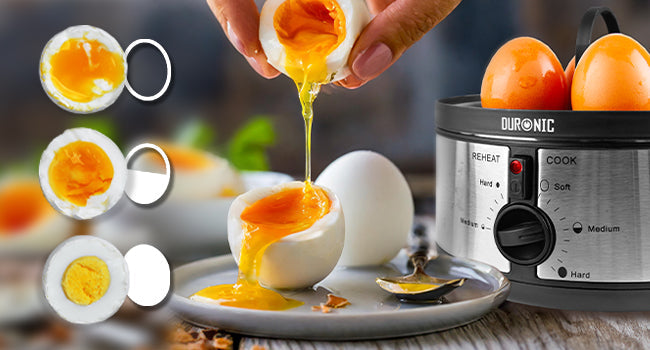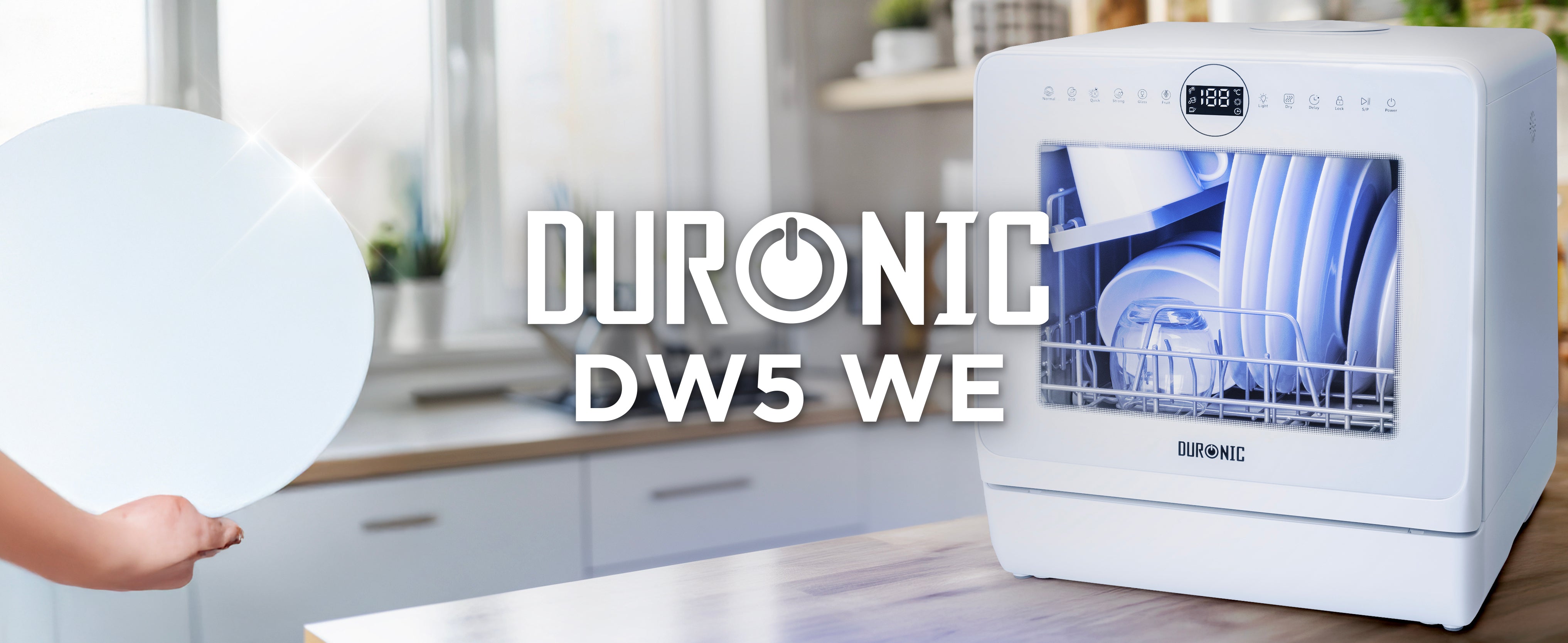What's the difference between a projector screen and a TV?

In recent years, the landscape of home entertainment has witnessed a significant shift, with the rise of projector screen usage becoming a notable trend. This evolution reflects a growing desire for more immersive viewing experiences within the comfort of one's own home. From cinematic movie nights to lifelike gaming sessions and vibrant presentations, projector screens are transforming living rooms into dynamic entertainment hubs. In this blog, we will delve into various aspects of projector screens, including the largest sizes available, the concept of screen gain, the differences between projector screens and TVs, the types of projector screens, and the nuances between white and grey screens.
The Largest Projector Screens for Home Use
When it comes to creating an unparalleled home cinema experience, the size of the projector screen plays a pivotal role. The adage "bigger is better" certainly holds true here, with larger screens offering a more immersive viewing experience. Among the giants in this category is Duronic, a brand renowned for its extensive range of projector screens suitable for every home and budget. Duronic's flagship model, the 150” Fixed Frame Projector Screen (FFPS), stands out as the largest in their lineup. This massive screen is designed for those who wish to replicate a true cinema experience at home. For rooms where space or setup flexibility is a concern, Duronic also offers a 133” electric projector screen, which can be conveniently mounted on the wall or ceiling, making it perfect for large spaces where a permanent, large-scale viewing area is desired.
Understanding Projector Screen Gain
Projector screen gain is a critical factor that influences the quality of the image projected. Gain refers to the measure of a screen's reflectivity, with a standard gain of 1.0 meaning the screen reflects the same amount of light as a standard whiteboard. Screens with higher gain values reflect more light, leading to brighter images, which can be particularly advantageous in environments with ambient light. However, it's essential to balance brightness with viewing angle, as screens with very high gain may suffer from reduced viewing angles.
Projector Screen vs. TV: A Comparative Analysis
Choosing between a projector screen and a TV often boils down to the desired use case and viewing environment. Projector screens offer a larger viewing area, providing a more immersive experience that's closer to what you would find in a cinema. They are also more portable and can be retracted or removed when not in use, making them ideal for multipurpose spaces. TVs, on the other hand, are more suitable for casual viewing, especially in brightly lit rooms, as they can produce vibrant images without the need for darkness. TVs also tend to have higher resolutions and require less setup than projector screens.
Types of Projector Screens and Duronic Model Types
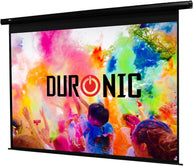
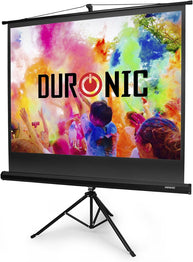
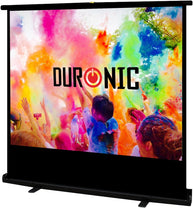
Projector screens come in various forms to suit different spaces, preferences, and budgets:
Basic Projector Screens (BPS): Duronic's BPS range offers affordability without compromising on quality, perfect for those on a tight budget.
Floor Projector Screens (FPS): These are free-standing and can be moved easily, offering flexibility in placement.
Electric Wall or Ceiling Mounted Projector Screens (EPS): For a touch of luxury and convenience, these screens can be retracted at the push of a button, making them ideal for mixed-use rooms.
Manual Wall or Ceiling Mounted Screens (MPS): These screens offer simplicity and reliability, with manual operation to lower or retract the screen.
Portable Tripod Projector Screens (TPS): TPS models are designed for easy transport and setup, perfect for presentations or outdoor movie nights.
Portable Desktop Projector Screens (DPS): Compact and easy to set up on any table, these screens are ideal for small spaces or impromptu viewings.
Fixed Frame Projector Screen (FFPS): Offering the best in picture quality with a permanent setup, these screens are designed for the dedicated home theatre enthusiast.
White vs. Grey Projector Screens

The choice between a white and grey projector screen can significantly impact the quality of the projected image. White screens, the most common type, are known for their ability to reflect light efficiently, producing bright and vibrant images in dark environments. Grey screens, however, are designed to improve contrast and black levels in ambient light conditions. They are particularly effective in rooms where it's not possible to completely control the lighting, offering a more cinematic experience even in less-than-ideal conditions.
The rise of projector screen usage in homes is a testament to the evolving demands for immersive entertainment experiences. With a variety of types and models available, such as those offered by Duronic, there's a projector screen to fit every home and lifestyle. Whether you're seeking the grandeur of a 150” screen for movie nights, the convenience of an electric retractable model, or the contrast-enhancing qualities of a grey screen, the world of projector screens offers endless possibilities to elevate your viewing experience. As technology advances, we can only expect this trend to continue, bringing the magic of cinema ever closer to home.

